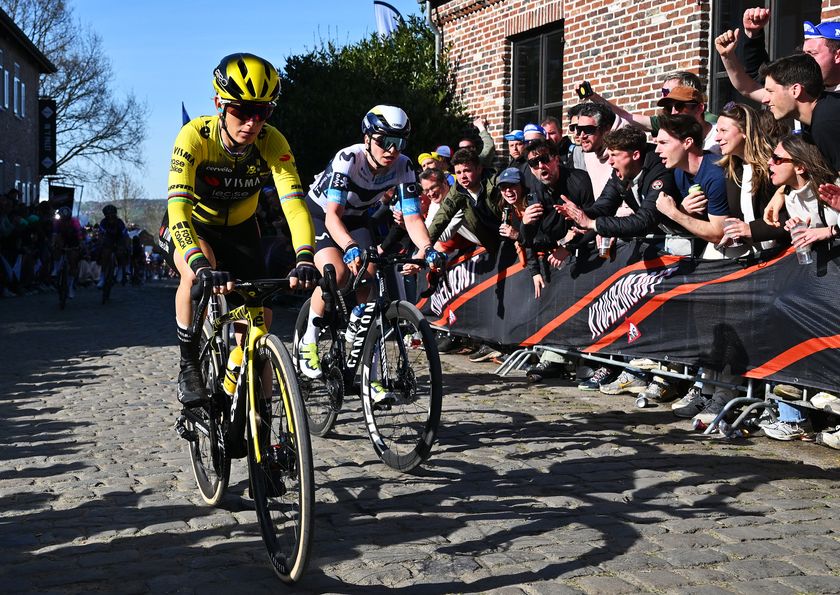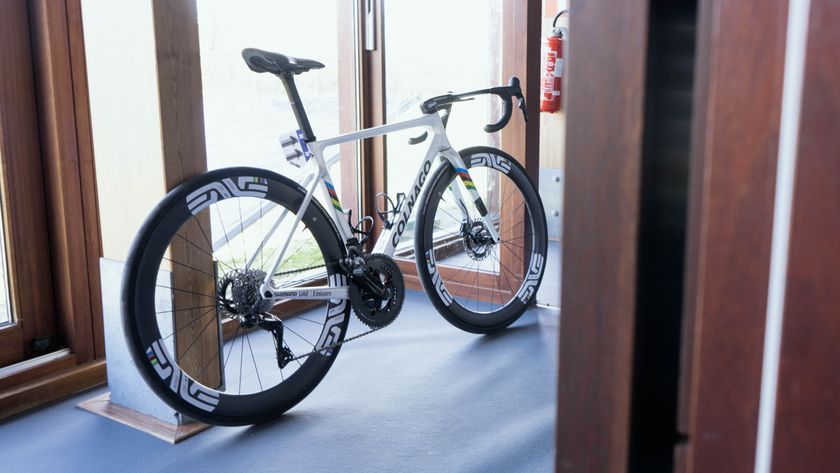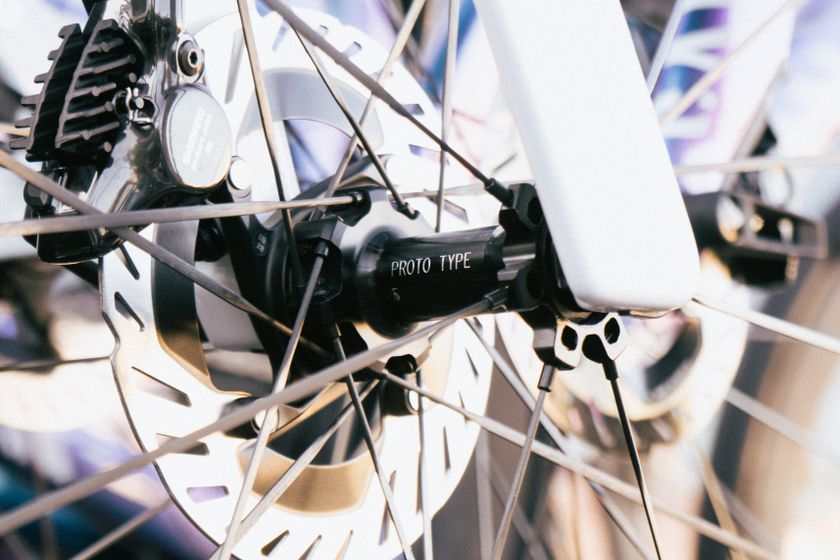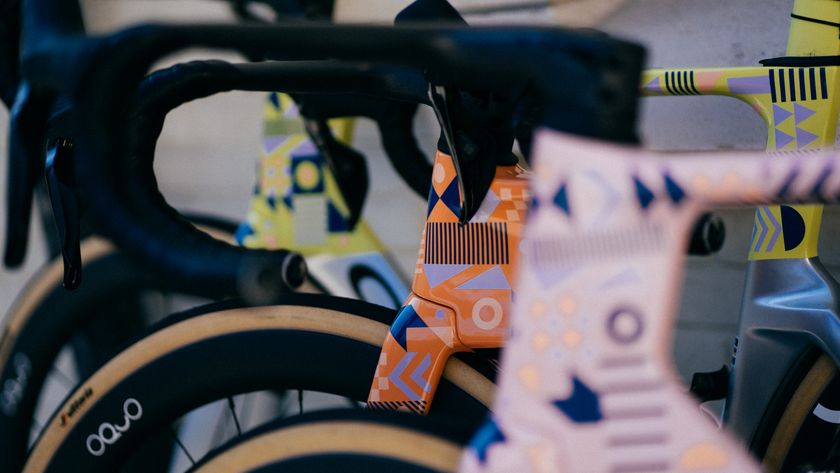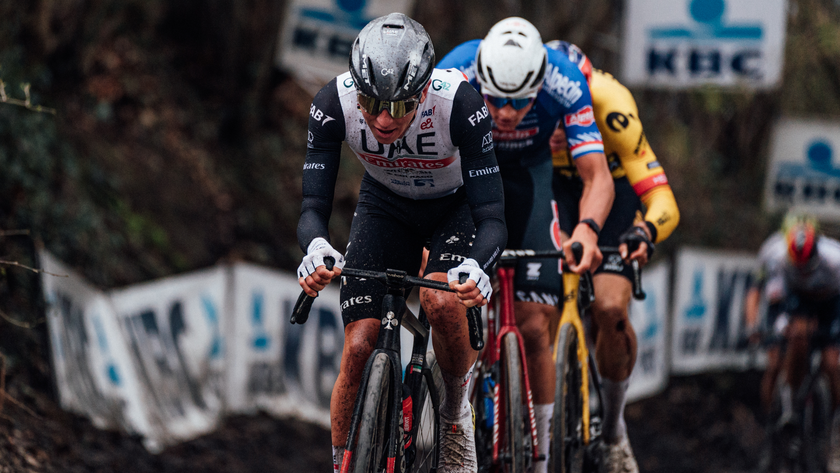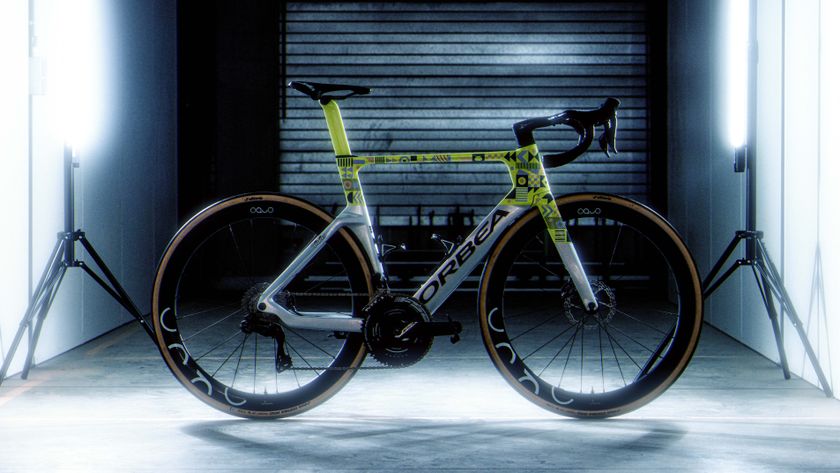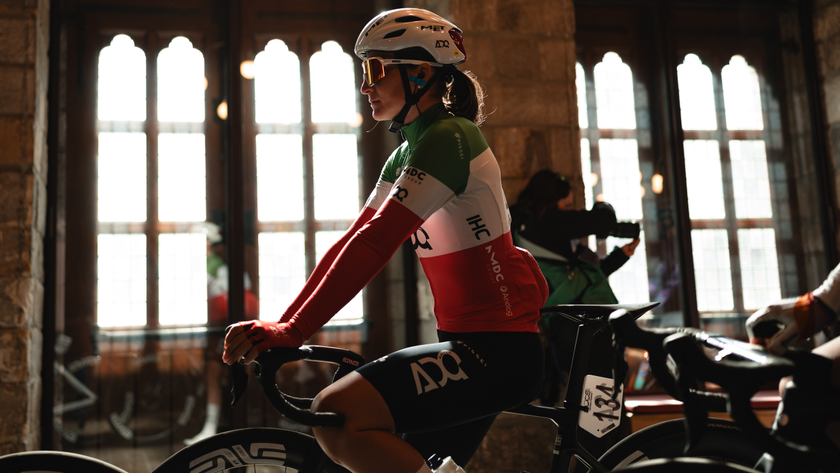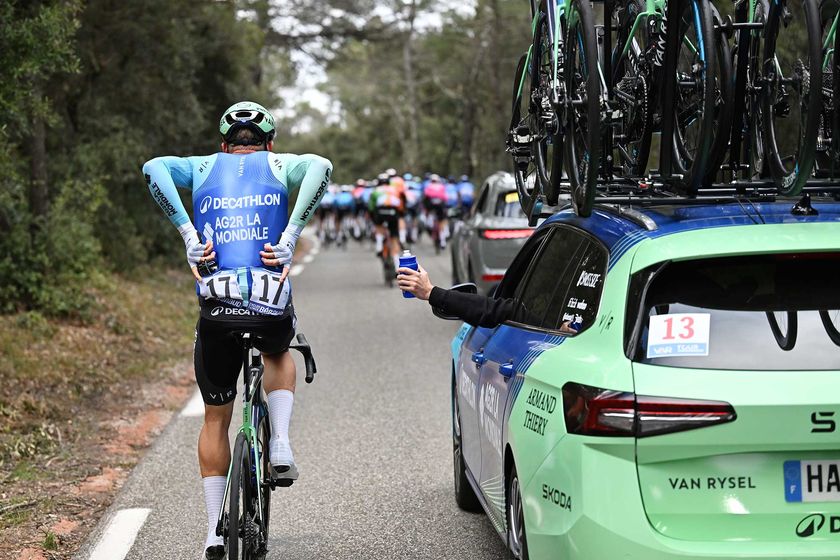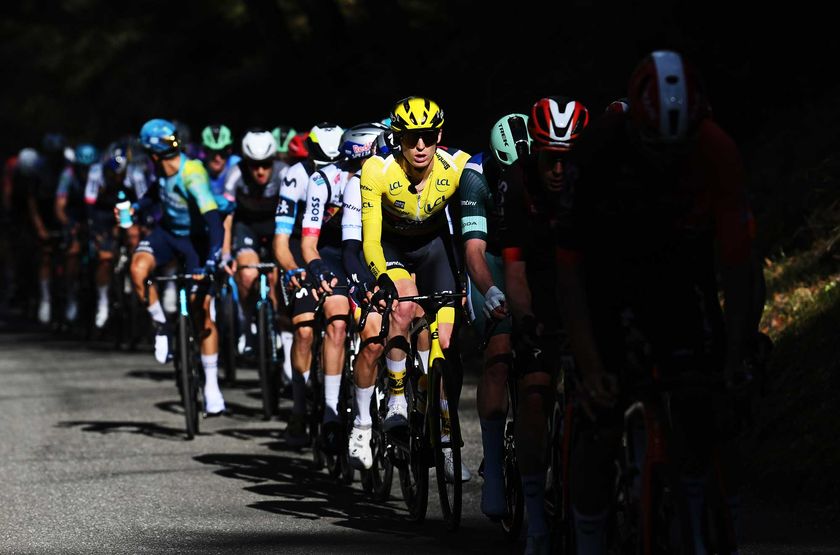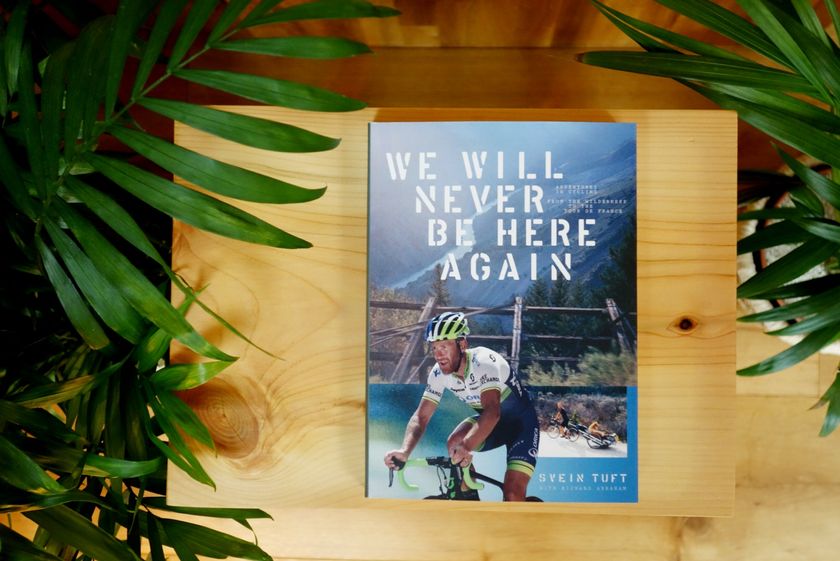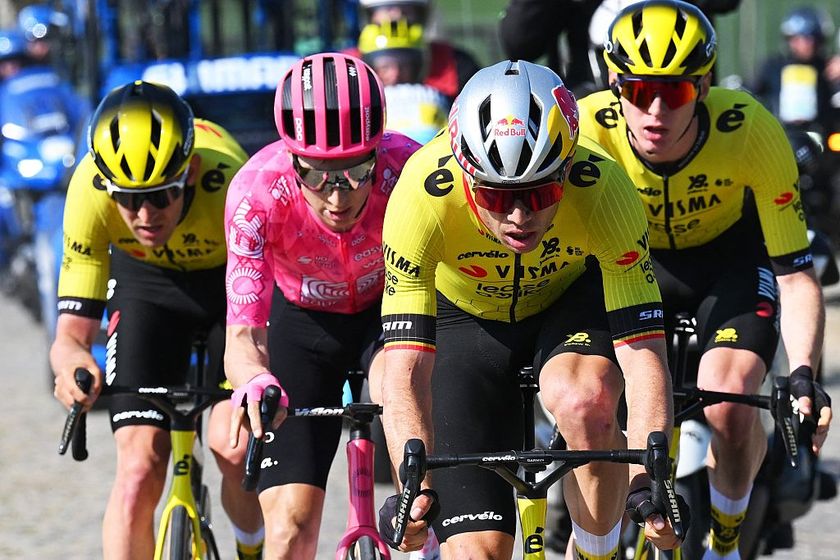Toe straps, TT bikes and zip-tied battery bodges: Six bike tech hacks found at the cycling esports world championships
When a bike doesn't need to move, the optimal setup can be wildly different
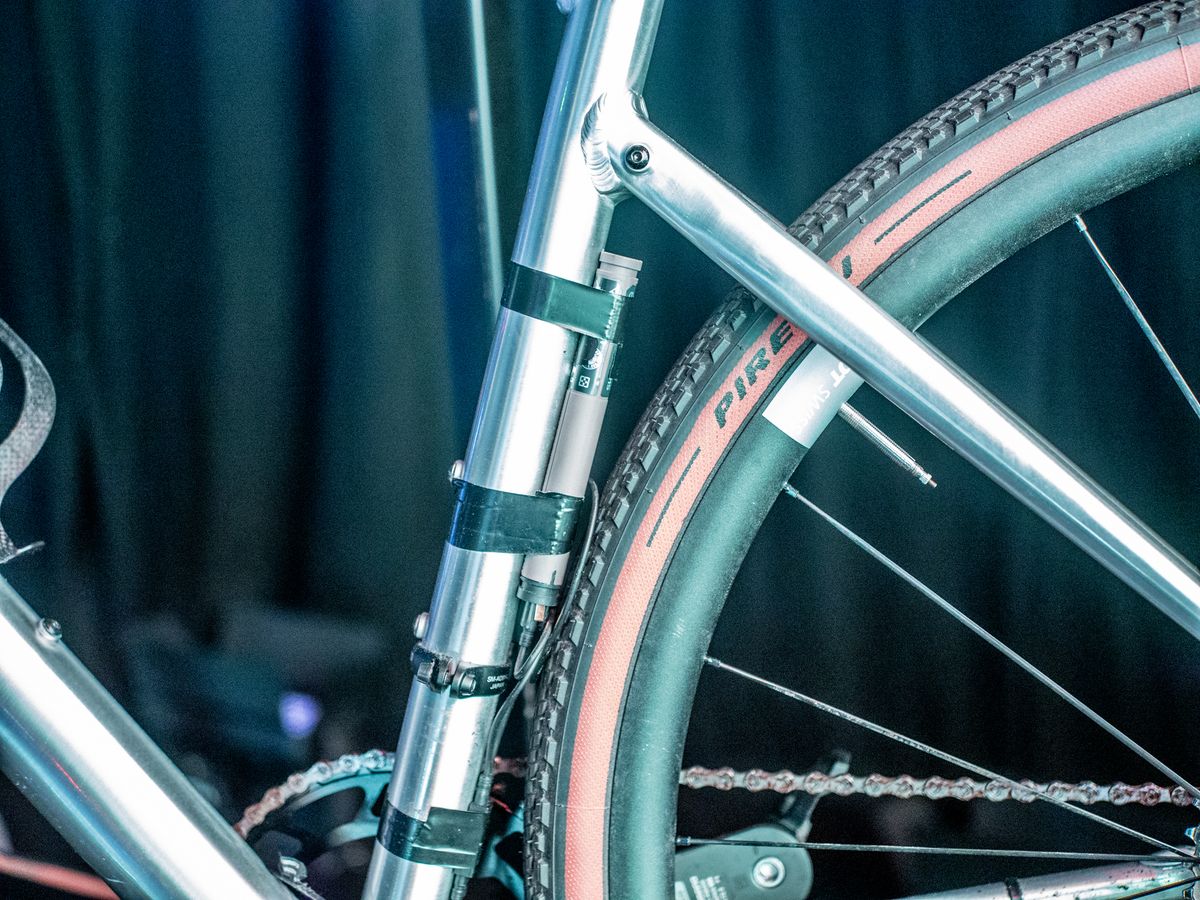
The dust is finally settling on the fourth UCI Cycling Esports World Championships, the inaugural in-person event hosted by MyWhoosh in Abu Dhabi, UAE.
The live event took place in the ADNEC Marina Hall, where the only thing more powerful than the riders on stage was the incredible air con, which held the hall at a constant 16ºC despite 30+ temperatures outside.
Cyclingnews was on the ground at the event, and we were given behind-the-scenes privileges, with access to the riders, their bikes, the organisers, and the military-style operation that brought together 42 athletes from around the world, created 22 indoor cycling stations, and streamed two World Championships live to the world.
Much has been written about the riders, including Mary Kate Mccarthy's redemption win, how Jason Osborne's WorldTour legs powered him to a league above the competition, and how 18-year-old Finn Kasper Borremans took bronze in only his second-ever eRace.
To wrap up our coverage of the event, this feature will ignore the riders, and will instead focus on the bikes, which were an eclectic mix of machines, with everything from WorldTour level race bikes to cobbled-together frankenbikes.
Some were highly optimised, others less so, but when a bike doesn't need to move, the process of readying it for a World Championship is wholly different to the 'aero is everything' approach that most cyclists chase. Some even had flat tyres.
How do you prepare a bike which doesn't need to be aerodynamic, doesn't need to be lightweight, and doesn't even need a rear wheel?
Get The Leadout Newsletter
The latest race content, interviews, features, reviews and expert buying guides, direct to your inbox!
The following tech hacks should answer the question, all of which were found on the stage of the Cycling Esports World Championships powered by MyWhoosh.



1. Waxed chains, ceramic bearings and oversized pulley wheels
When the bike doesn't need to move, the usual laws of physics that apply to tech optimisation don't apply in the same order of priority. For normal bikes, aerodynamics is the biggest retarding factor on speed, followed by weight, but here neither of those matter an ounce.
Instead, the biggest factor in how efficiently power is transferred from the pedals to the virtual road is drivetrain efficiency.
The more drag between the pedals and the smart trainer, the slower the virtual rider will go for the same energy input. Therefore, ceramic bearings were a common sight, as were waxed chains. Many athletes added an oversized pulley wheel to their setup too.



2. Stiffness and power transfer, including track bike toe straps
Stiffness is another important factor. The stiffer the frame, the less it will flex under load and thus, more of the power going into the pedals will make it to the smart trainer.
This isn't exactly an area you can hack, per se. Your frame's stiffness is what it is, and although we spotted a couple of stiff aero bikes in use - such as the Cannondale SystemSix - and even a time trial bike, we found most bikes were standard road bikes. We don't think any riders were mad enough to pour concrete into their frame to make it stiffer.
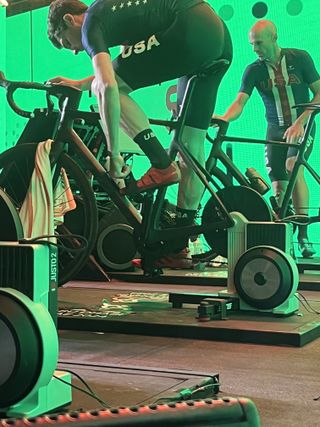
We did, however, spot American Zach Nehr using a set of track bike toe straps on his pedals. Known for improving power transfer by locking your feet more tightly to the pedals, these would have likely helped during the first-round sprint.


3. Comfortable saddles
While a comfortable saddle is an essential accessory on any bike, this is only exaggerated on a bike that is fixed in one position. As a result, 3D-printed saddles were a common sight, and extra-padded time trial saddles were also spotted.
In many cases, we found outdated or budget-friendly bikes shod with saddles that exceeded £300 / $350 in retail price, suggesting riders had focussed their budget on comfort-enhancing hacks.



4. Relaxed ride positions
When aerodynamics doesn't matter, the height of your frontal area also doesn't matter, and as a result, many riders were running maximum spacers beneath their stem, or angled stems flipped upwards to add height at the handlebars.
On normal road bikes, riders often choose a lower, longer position to make themselves smaller and thus more aerodynamic. This is occasionally offset against an ability to put out power or take in oxygen. Take aero out of the equation though and riders can sit as upright as they want, ultimately opening up their chest and lungs to let in more air. How much of a difference this makes is likely rider-specific, but in a sport where handlebars are getting narrower, esports is likely going the other way.

5. Motivational mantras
No matter the sport, motivation is key. We often see motivational mascots or mantras taped to the stem of WorldTour riders' bikes, such as the miniature Hulk on the front of Tadej Pogačar's bike.
On the bike of Kathrin Fuhrer, we found this hand-written note which reads "If it hurts me, it's killing them! Pain Flow. Embrace It. Let's Dance!" It clearly worked, as Fuhrer took home bronze in the women's race.
In a way, it highlights the positives of having the world championship as an in-person event. With the riders all on stage together, riding shoulder to shoulder, they could see the pain their efforts were inflicting on each other in a way that's impossible to get when riding at home in your garage or living room.


6. This wild build
Saving what I think is the best 'til last - this is arguably the most specific indoor build of all the bikes at the event.
The frame is an Allebike MB31 disc brake gravel bike, but not much remains from the original build. The front fork has been replaced with a rim brake road fork, but no brakes are fitted front or rear.
When photographed, the bike was shod with a gravel wheel and tyre at the rear, but a road wheel and tyre up front. The 1x chainring has been replaced with a larger ring too.
Most intriguingly, the owner - Sweden's Johan Noren - has fitted a Shimano Di2 groupset, presumably for the quickened shifting it offers. But it appears the frame wouldn't accept the internal battery for the groupset, and as such, it has been zip tied to the rear of the seat tube. Cables are then routed externally to the rear derailleur.
Whether this build was specifically designed for the improved indoor optimisation or a simple cobbling together of bits, we don't know, but you'd never spot anything this wild on the road.

The future of cycling esports
According to Matt Smithson, the Senior Manager of Esports and Events at MyWhoosh, he "cannot see how we move forward by having this at home." He refers to the in-person nature of the world championships, an event that he and his team has worked tirelessly to bring into fruition.
There's no denying that cycling esports has had its run-in with a different type of tech hack - those where data manipulation has been the goal, and malicious intent the motivation. MyWhoosh competitor Zwift has been forced to suspend users on multiple occasions and a weight-altering hack was aired just days ahead of the 2022 esports worlds. Just last month, the newly crowned world champion Mary Kate Mccarthy had her result annulled due to a 'hardware malfunction', but having the event in-person removes any doubt about the riders' credibility.
All smart trainers and computers were set up by MyWhoosh staff, bikes were handed over 24 hours ahead of the event, and riders were tested for anti-doping in the lead-up to the race.
Of course, the accessibility of indoor cycling will remain. Smithson still likes "the qualification pathways and the accessibility of virtual cycling being at home, and the pathway to get to the final being that. That's how I think it should always remain."
He then turns his focus back to the in-person live World Championships events, saying "I think this is the show that everybody wants to see."
A future of indoor-specific cycling tech?
Where a World Championship title and big prize money is on the line, there will always be athletes who try to optimise their equipment for the biggest gain and maximum opportunity to win.
And as esports continues to legitimise as a sport, we can only expect to see more and more tech hacks, and bikes becoming evermore specialised to the new pursuit.
Short of turning to a smart bike - which wouldn't be permitted in an event with standardised trainers - here's how we'd optimise an indoor bike.
First, we'd buy the stiffest time trial bike frame we could find in the smallest size we could fit. Time trial frames are typically designed for maximum power transfer, so are likely stiffer than most road bikes, but an aero road bike wouldn't be off the cards. A smaller frame with shorter chainstays should offer a slight increase in stiffness between the bottom bracket and the cassette, and thus help increase the amount of power that makes it to the smart trainer.
We'd fit it with as big a chainring as we could, then offset that with a big cassette and an oversized pulley wheel system. This should help to reduce the friction in the articulation of the chain. We'd pair this with a waxed chain and ceramic bearings all-round to bring the friction down as much as possible.
We'd add in the track bike toe straps employed by Nehr, a comfortable saddle, and a riser handlebar that brings the stack height up to a very relaxed, upright position. There's little point modifying a bike to maximise power input if it puts you into a position where you can't maintain the same output, after all.
We'd use wide handlebars too, to open up the chest and avoid any restricted air intake. We'd want them to be stiff, so any wrenching on the bars helps increase power rather than simply flexing the bike.
Finally, we'd add satellite shifters that let us shift easily from all hand positions.

Josh is Associate Editor of Cyclingnews – leading our content on the best bikes, kit and the latest breaking tech stories from the pro peloton. He has been with us since the summer of 2019 and throughout that time he's covered everything from buyer's guides and deals to the latest tech news and reviews.
On the bike, Josh has been riding and racing for over 15 years. He started out racing cross country in his teens back when 26-inch wheels and triple chainsets were still mainstream, but he found favour in road racing in his early 20s, racing at a local and national level for Somerset-based Team Tor 2000. These days he rides indoors for convenience and fitness, and outdoors for fun on road, gravel, 'cross and cross-country bikes, the latter usually with his two dogs in tow.

